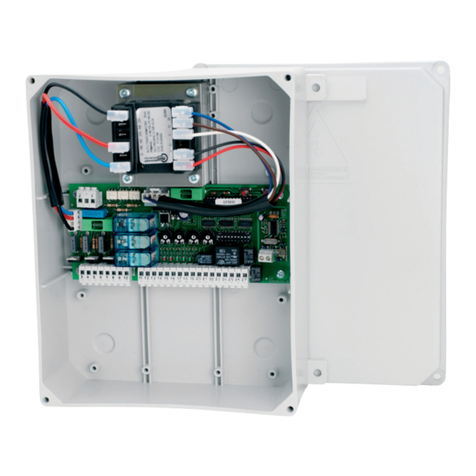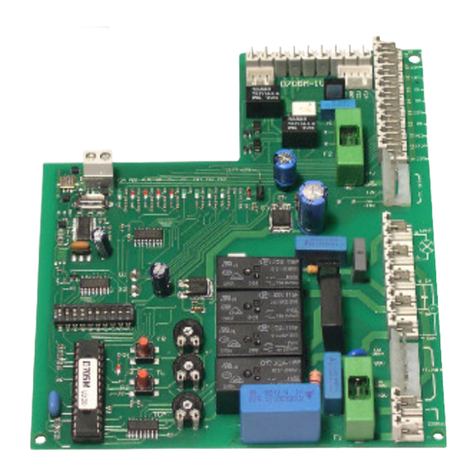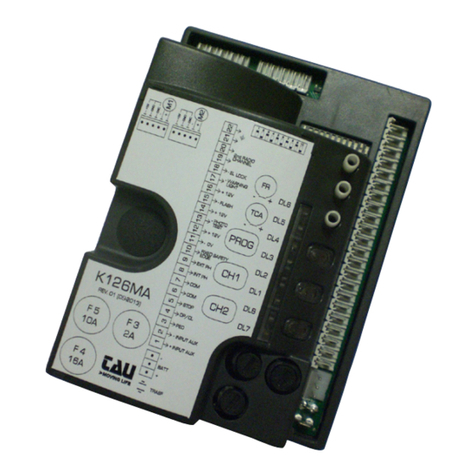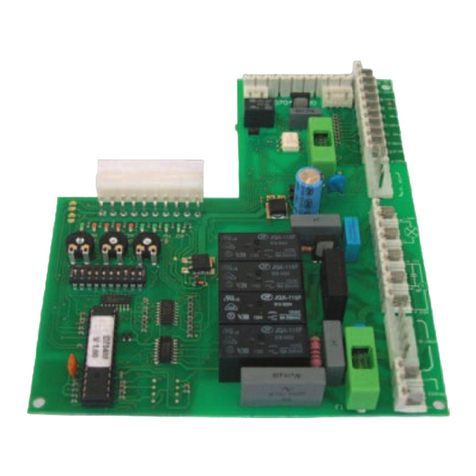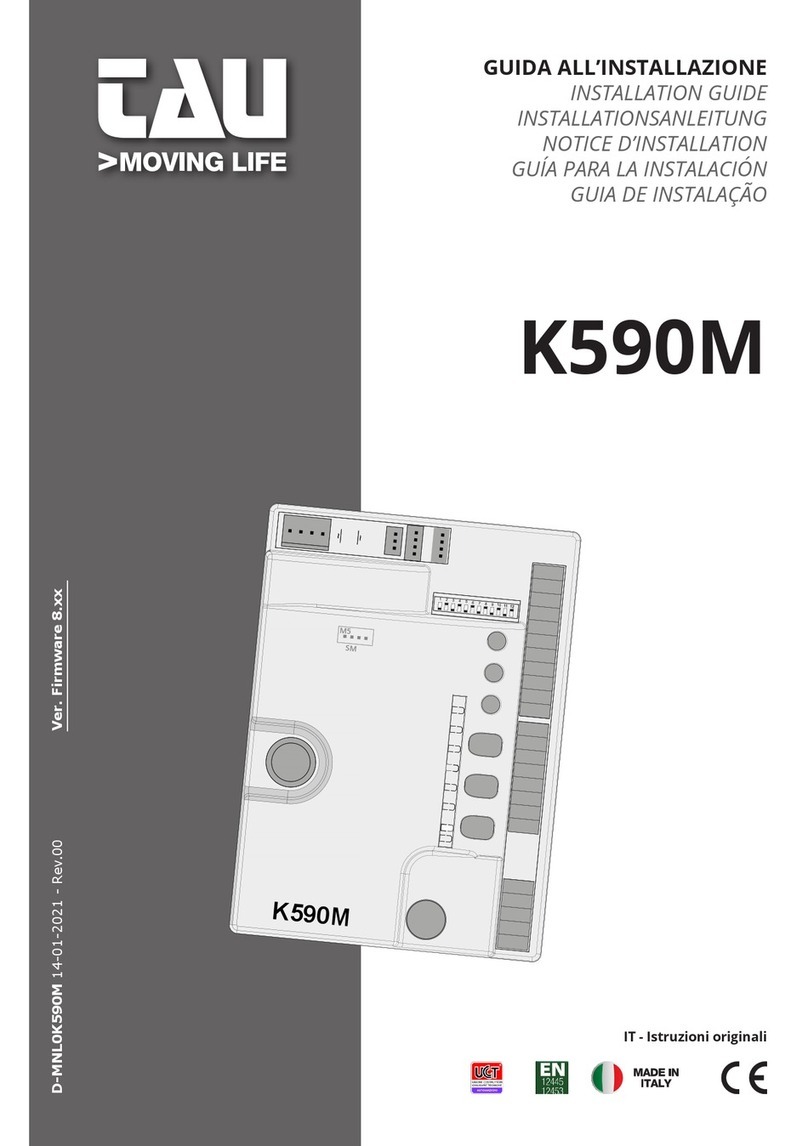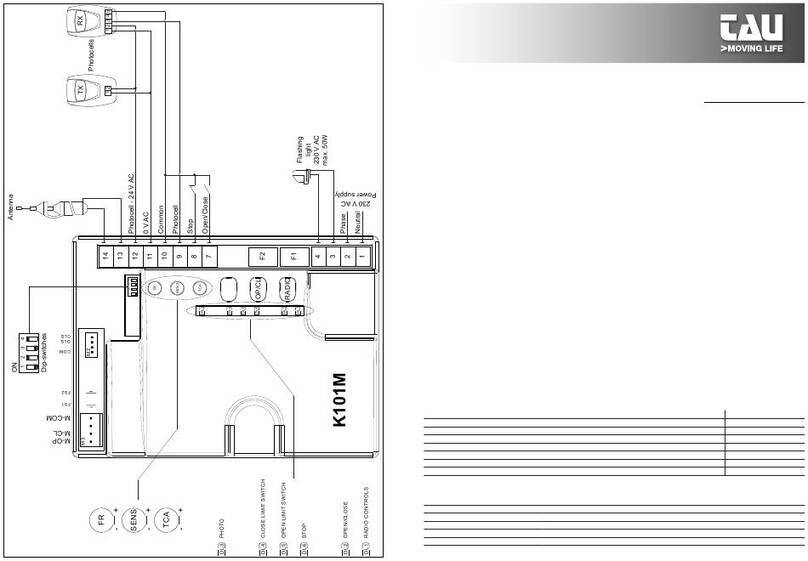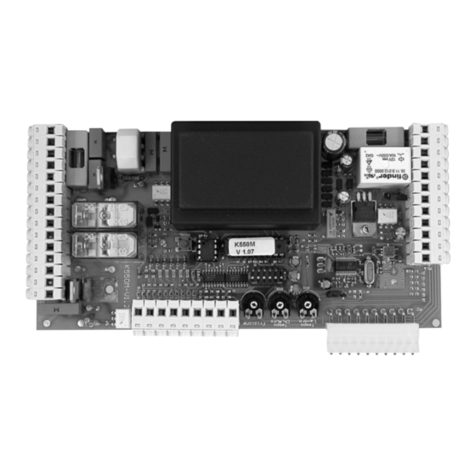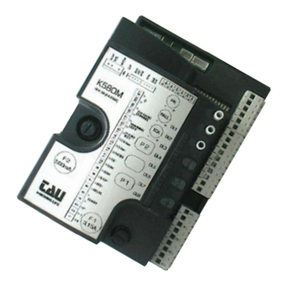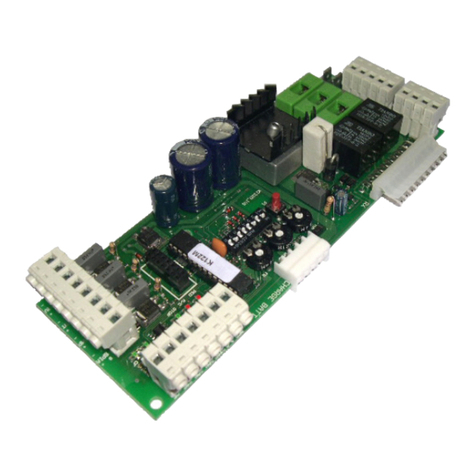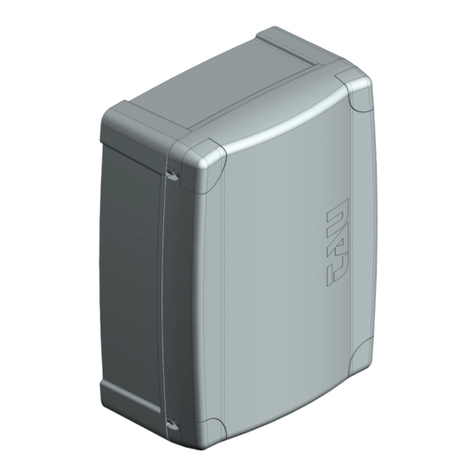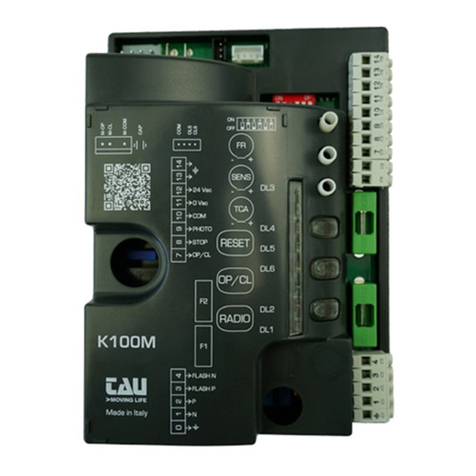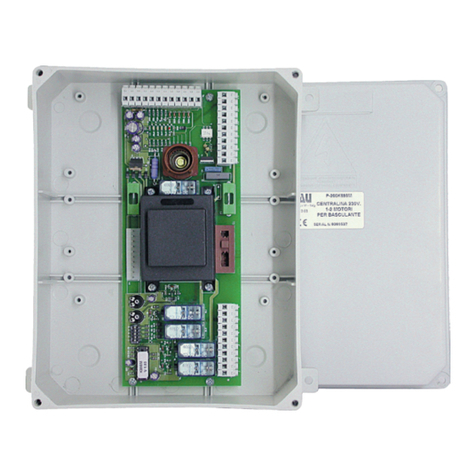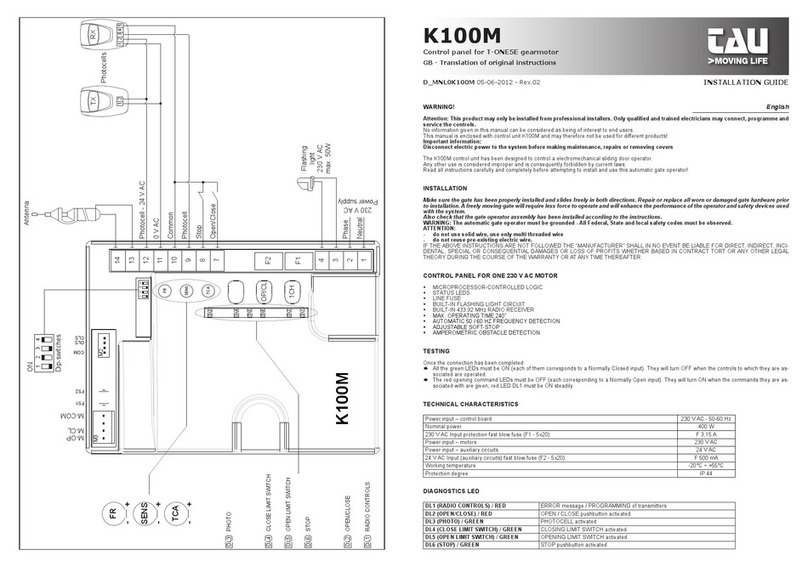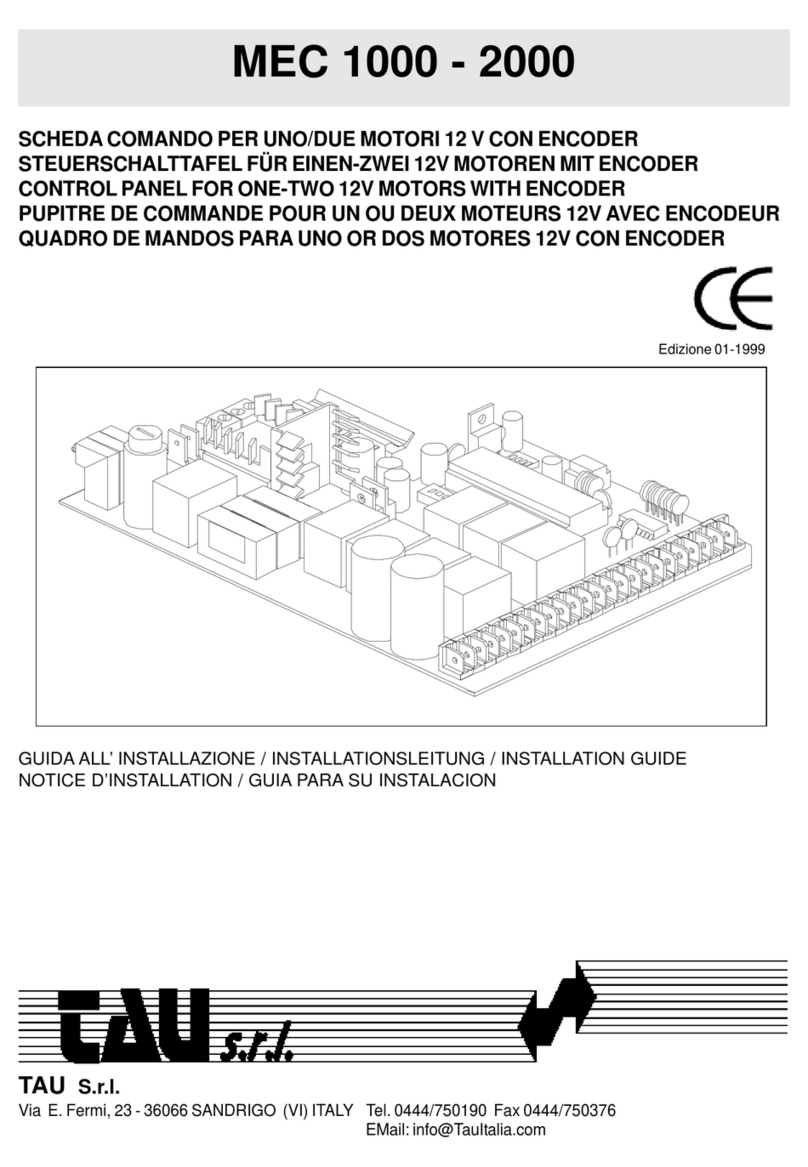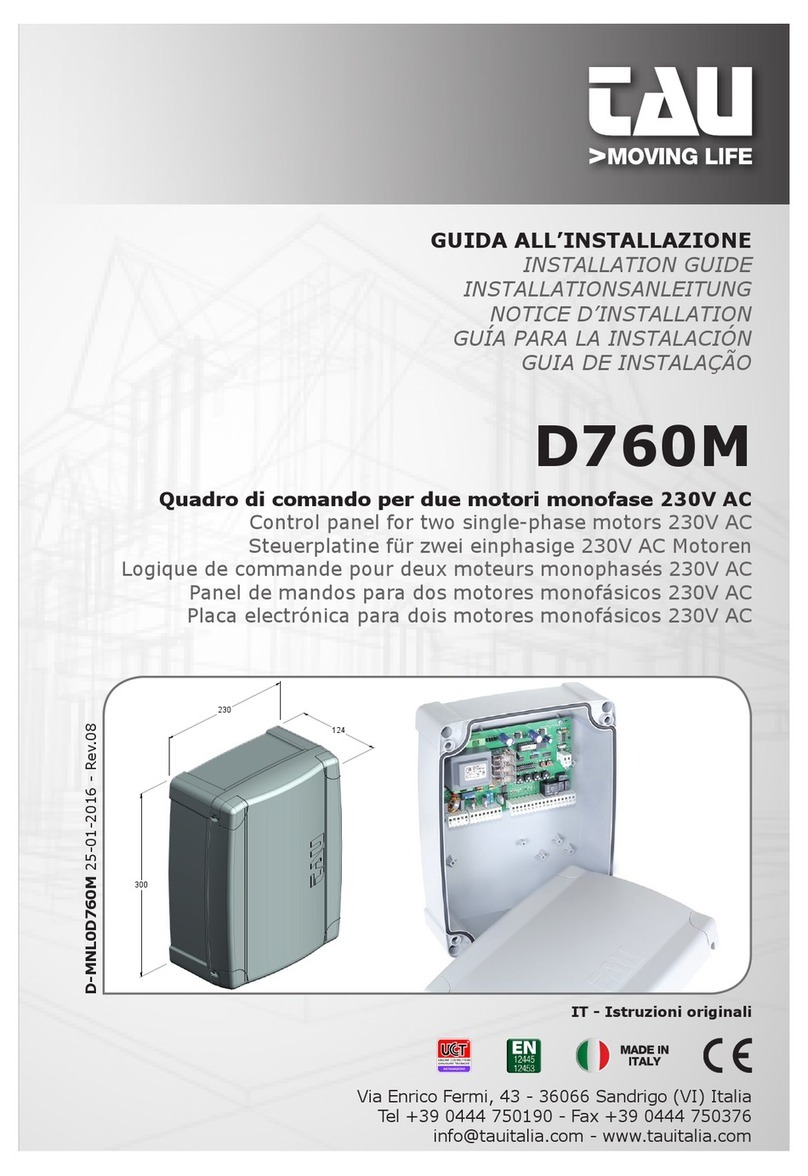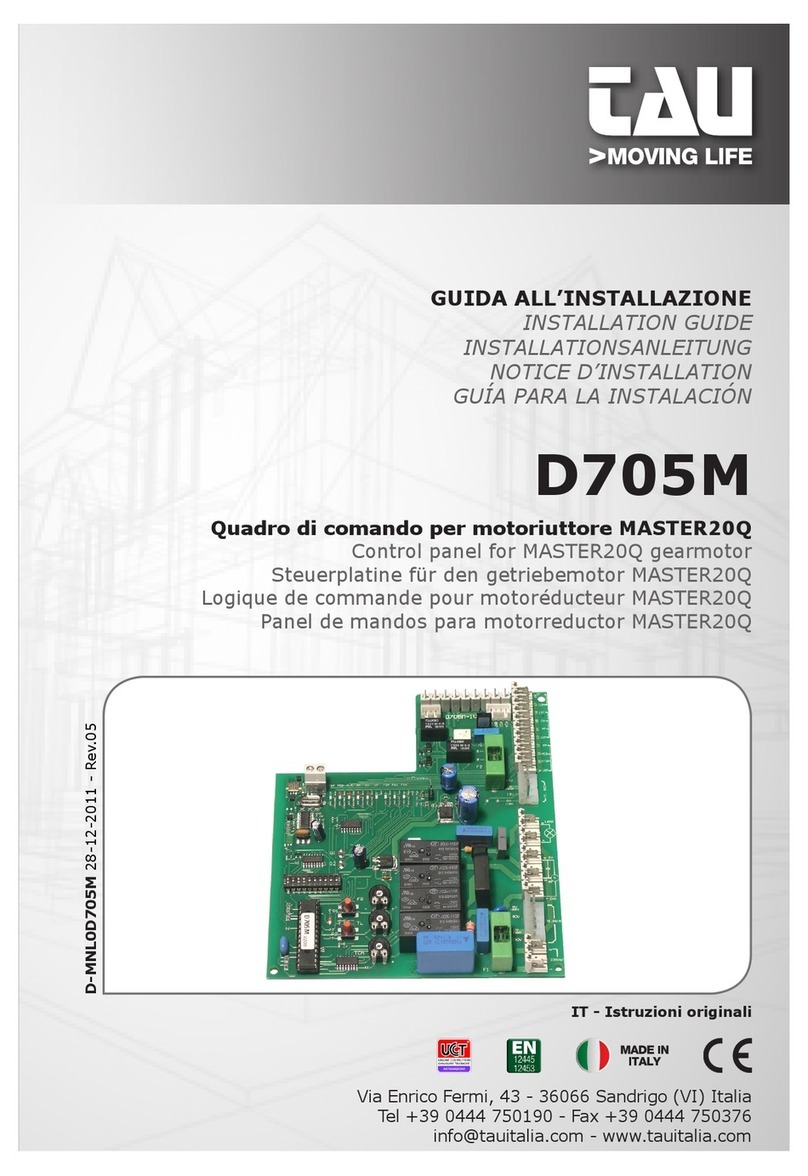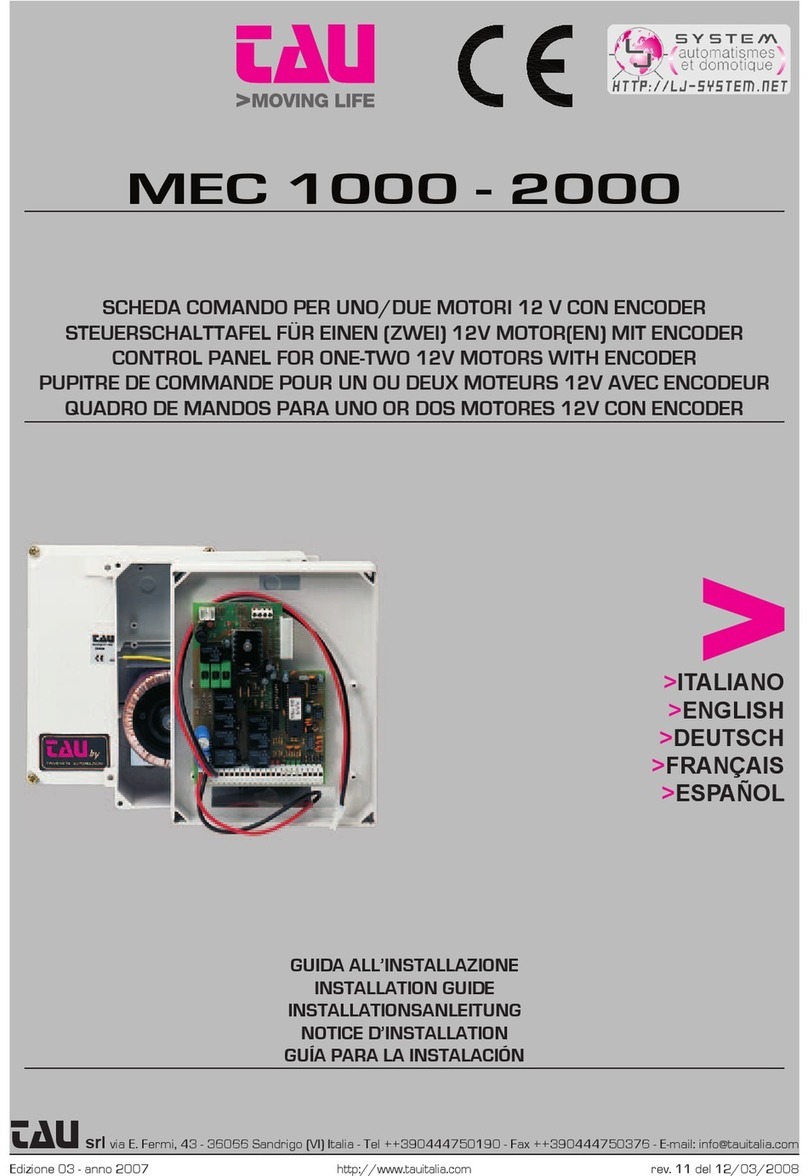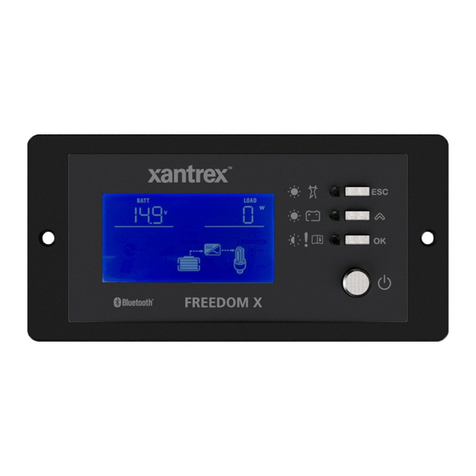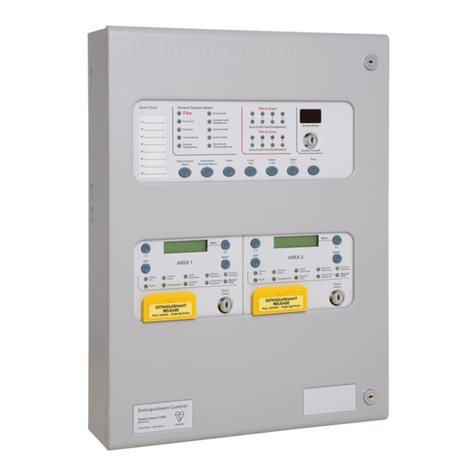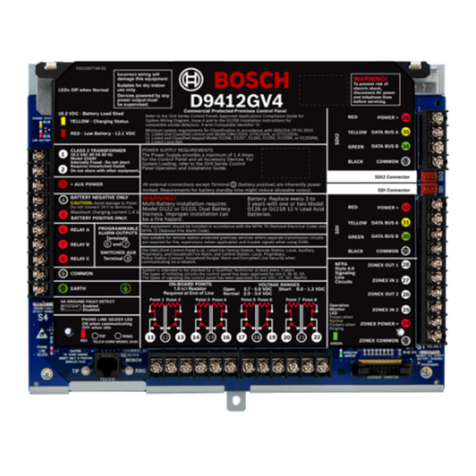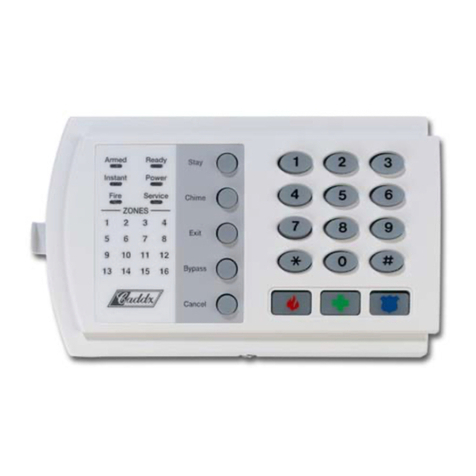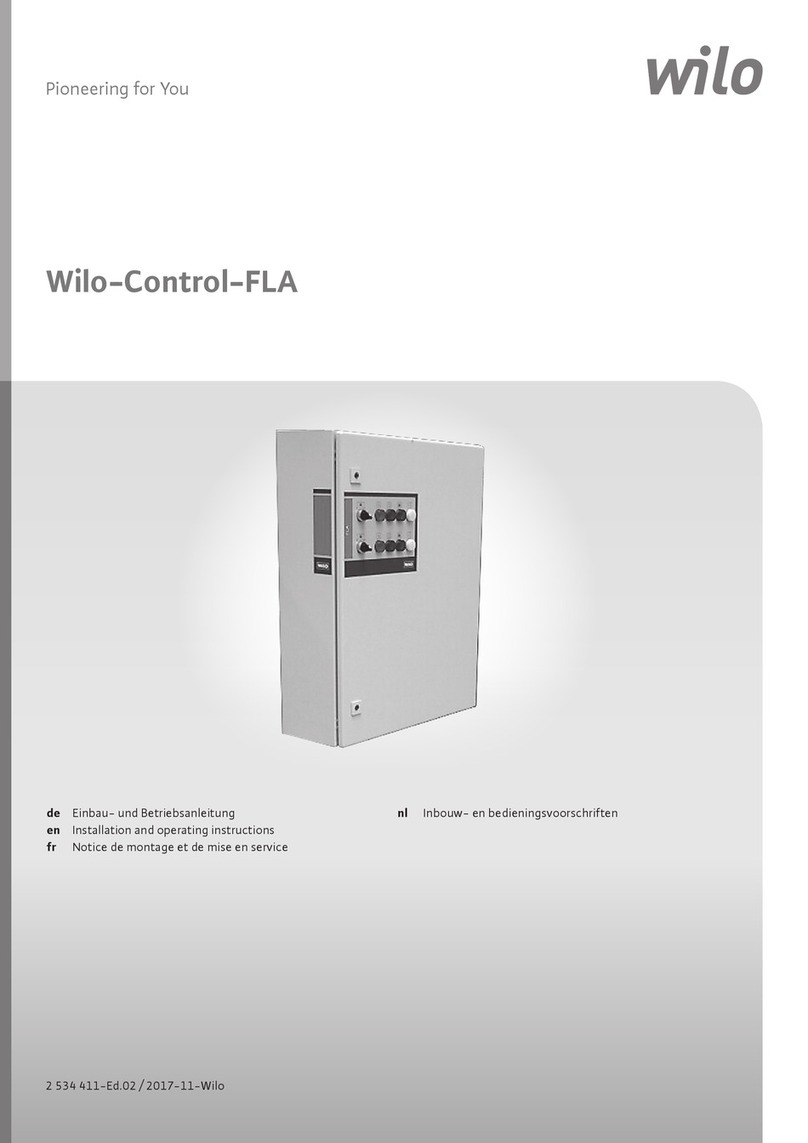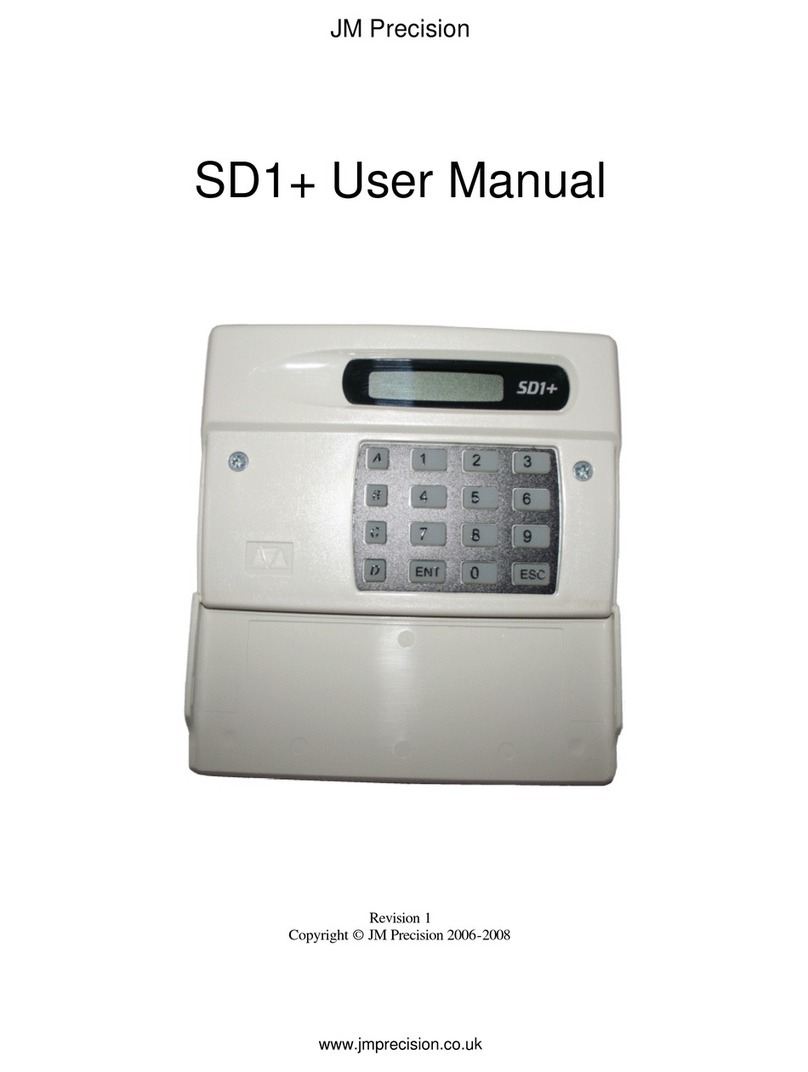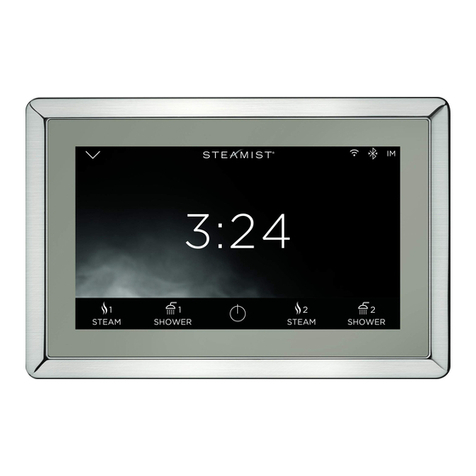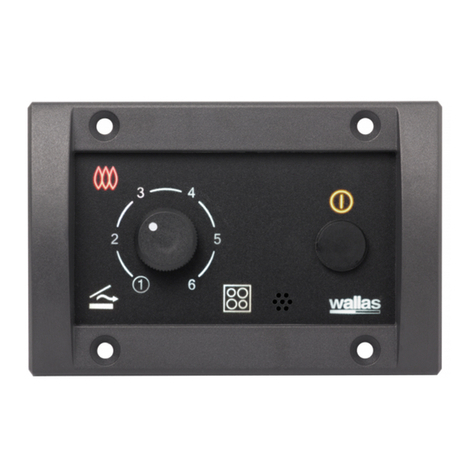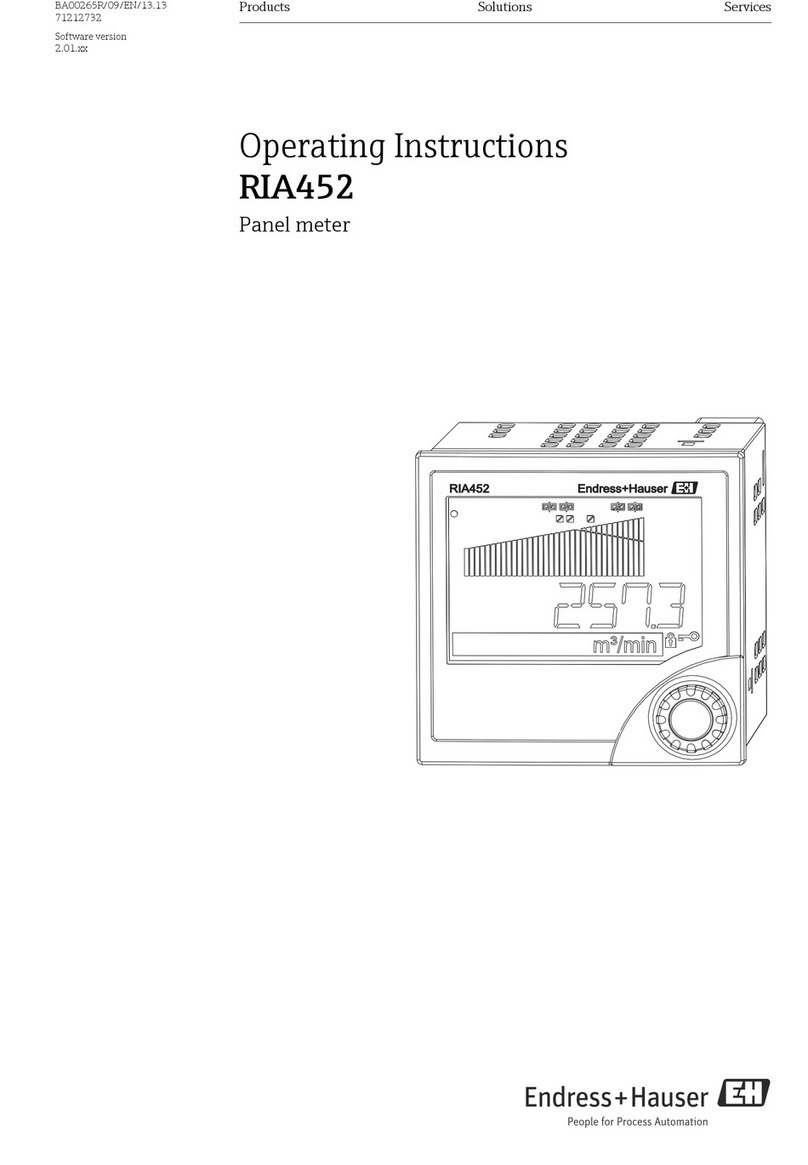tau D747M User manual

1
D747M
GUIDA ALL’INSTALLAZIONE
INSTALLATION GUIDE
INSTALLATIONSANLEITUNG
NOTICE D’INSTALLATION
GUÍA PARA LA INSTALACIÓN
D747M
Quadro di comando per uno/due motori 12V con encoder
Control panel for one-two 12V motors with encoder
Steuerplatine für einen (zwei) 12V Motor(en) mit Encoder
Logique de commande pour un ou deux moteurs 12V avec encodeur
Panel de mandos para uno or dos motores 12V con encoder
Via Enrico Fermi, 43 - 36066 Sandrigo (VI) Italia
Tel +39 0444 750190 - Fax +39 0444 750376
info@tauitalia.com - www.tauitalia.com
IT - Istruzioni originali
D-MNL0D747M 05-08-2011 - Rev.14

2
D747M
Introduzione
Il presente manuale è destinato solamente al personale tecnico qualicato per l’installazione.
Nessuna informazione contenuta nel presente fascicolo può essere considerata d’interesse per
l’utilizzatore nale. Questo manuale è allegato alla centralina D747M, non deve pertanto essere
utilizzato per prodotti diversi!
Avvertenze importanti:
Togliere l’alimentazione di rete alla scheda prima di accedervi.
La centralina D747M è destinata al comando di un motoriduttore elettromeccanico per
l’automazione di cancelli, porte e portoni.
Ogni altro uso è improprio e, quindi, vietato dalle normative vigenti.
È nostro dovere ricordare che l’automazione che state per eseguire, è classicata come
“costruzione di una macchina” e quindi ricade nel campo di applicazione della direttiva europea
89/392 CEE (Direttiva Macchine).
Questa, nei punti essenziali, prevede che:
- l’installazione deve essere eseguita solo da personale qualicato ed esperto;
- chi esegue l’installazione dovrà preventivamente eseguire “l’analisi dei rischi” della macchi-
na;
- l’installazione dovrà essere fatta a “regola d’arte”, applicando cioè le norme;
- inne dovrà essere rilasciata al proprietario della macchina la”dichiarazione di conformità”.
Risulta chiaro quindi che l’installazione ed eventuali interventi di manutenzione devono essere
effettuati solo da personale professionalmente qualicato, in conformità a quanto previsto dalle
leggi, norme o direttive vigenti.
Nella progettazione delle proprie apparecchiture, TAU rispetta le normative applicabili al prodotto
(vedere la dichiarazione di conformità allegata); è fondamentale che anche l’installatore, nel
realizzare gli impianti, prosegua nel rispetto scrupoloso delle norme.
Personale non qualicato o non a conoscenza delle normative applicabili alla categoria dei
“cancelli e porte automatiche” deve assolutamente astenersi dall’eseguire installazioni ed
impianti.
Chi non rispetta le normative è responsabile dei danni che l’impianto potrà causare!
si consiglia di leggere attentamente tutte le istruzioni prima di procedere con l’installazione.
Italiano
Introduction
This manual has been especially written for use by qualied tters. No information given in
this manual can be considered as being of interest to end users. This manual is enclosed with
control unit D747M and may therefore not be used for different products!
Important information:
Disconnect the panel from the power supply before opening it.
The D747M control unit has been designed to control an electromechanical gear motor for
automating gates and doors of all kinds.
Any other use is considered improper and is consequently forbidden by current laws.
Please note that the automation system you are going to install is classied as “machine
construction” and therefore is included in the application of European directive 89/392 EEC
(Machinery Directive).
This directive includes the following prescriptions:
- Only trained and qualied personnel should install the equipment;
- the installer must rst make a “risk analysis” of the machine;
- the equipment must be installed in a correct and workmanlike manner in compliance with all
the standards concerned;
- after installation, the machine owner must be given the “declaration of conformity”.
This product may only be installed and serviced by qualied personnel in compliance with
current, laws, regulations and directives.
English

3
D747M
When designing its products, TAU observes all applicable standards (please see the attached
declaration of conformity) but it is of paramount importance that installers strictly observe the
same standards when installing the system.
Unqualied personnel or those who are unaware of the standards applicable to the “auto-
matic gates and doors” category may not install systems under any circumstances.
Whoever ignores such standards shall be held responsible for any damage caused by the
system!
Do not install the unit before you have read all the instructions.
Einleitung
Das vorliegende Handbuch ist nur für technisches, zur Installation qualiziertes Personal
bestimmt. Die im vorliegenden Heft enthaltenen Informationen sind für den Endbenutzer nicht
interessant. Diese Anleitung liegt der Steuerung D747M bei und darf daher nicht für andere
Produkte verwendet werden!
Wichtige Hinweise:
Die Netzstromversorgung vor dem Zugriff zur Schalt- und Steuertafel abschalten.
Die Steuerung D747M dient zum Steuern eines elektromechanischen Getriebemotors für die
Automatisierung von Türen und Toren.
Jeder andere Einsatz ist unsachgemäß und daher laut gültiger Vorschriften verboten.
Unsere Picht ist, Sie daran zu erinnern, dass die Automatisierung, die Sie ausführen werden,
als „Maschinenkonstruktion” klassiert ist und daher zum Anwendungsbereich der Europäischen
Richtlinie 89/392 (Maschinenrichtlinie) gehört.
Nach den wichtigsten Punkten dieser Vorschrift:
- darf die Installation ausschließlich von erfahrenem Fachpersonal ausgeführt werden;
- muss jener, der die Installation ausführt, vorher eine „Risikoanalyse” der Maschine ma-
chen;
- muss die Installation “fachgerecht” bzw. unter Anwendung der Vorschriften ausgeführt sein;
- muss dem Besitzer der Maschine die „Konformitätserklärung” ausgehändigt werden.
Es ist daher offensichtlich, dass Installation und eventuelle Wartungseingriffe nur von beruich
qualiziertem Personal in Übereinstimmung mit den Verordnungen der gültigen Gesetze,
Normen und Vorschriften ausgeführt werden dürfen.
Bei der Planung ihrer Apparaturen hält sich TAU an die für das Produkt anwendbaren Vorschriften
(siehe anliegende Konformitätserklärung); von grundlegender Wichtigkeit ist, dass sich auch
der Installateur bei der Durchführung der Anlage genauestens an die Vorschriften hält.
Personal, das nicht qualiziert ist oder die Vorschriften nicht kennt, die für die Kategorie
“automatische Türen und Tore” anwendbar sind, darf Installationen und Anlagen keinesfalls
ausführen.
Wer sich nicht an die Vorschriften hält, haftet für die Schäden, die von der Anlage verursacht
werden können.
Vor der Installation bitte alle Anweisungen genau lesen.
Deutsch
Introduction
Le présent manuel est destiné exclusivement au personnel technique qualié pour
l’installation. Aucune information contenue dans ce fascicule ne peut être considérée comme
intéressante pour l’utilisateur nal. Ce manuel est joint à l’armoire de commande D747M, il ne
doit donc pas être utilisé pour des produits différents !
Recommandations importantes :
Couper l’alimentation électrique de l’armoire avant d’y accéder.
L’armoire de commande D747M est destinée à la commande d’un motoréducteur
électromécanique pour l’automatisation de portails et de portes.
Français

4
D747M
Introducción
Este manual está destinado sólo al personal técnico cualicado para la instalación. Ninguna
información contenida en este manual puede ser considerada interesante para el usuario nal.
Este manual acompaña a la central D747M; por lo tanto, ¡no debe utilizarse para otro tipo de
producto!
Advertencias importantes:
Corte la alimentación de red a la tarjeta antes de acceder a ella.
La central D747M está destinada al accionamiento de un motorreductor electromecánico para
la automatización de cancelas, puertas y portones.
Cualquier otro uso es considerado inadecuado y, por consiguiente, está prohibido por las
normativas vigentes.
Es nuestro deber recordarle que la automatización que está por realizar está clasicada como
«construcción de una máquina» y, por consiguiente, entra dentro del campo de aplicación de la
directiva europea 89/392 CEE (Directiva de máquinas).
Dicha normativa, en los puntos fundamentales, prevé que:
- la instalación debe ser efectuada sólo por personal cualicado y experto;
- la persona que efectúe la instalación deberá analizar preventivamente los riesgos de la
máquina;
- la instalación deberá ser hecha según las reglas del arte, es decir aplicando las normas;
- por último, habrá que expedir al dueño de la máquina la «declaración de conformidad».
Por consiguiente, es evidente que la instalación y los posibles trabajos de mantenimiento deben
ser efectuados por personal cualicado, de acuerdo con cuanto previsto por las leyes, normas
y directivas vigentes.
Durante el diseño de sus equipos, TAU respeta las normativas aplicables al producto (véase la
declaración de conformidad adjunta); también es fundamental que el instalador, al realizar la
instalación, respete escrupulosamente las normas.
Personal no cualicado, o que no conozca las normativas aplicables a la categoría de las
«cancelas y puertas automáticas», debe abstenerse de efectuar instalaciones.
¡Quien no respeta las normativas es responsable de los daños que la instalación podría
provocar!
se aconseja leer con atención todas las instrucciones antes de proceder con la instalación.
Toute autre utilisation est impropre et donc interdite par les normes en vigueur.
Nous nous devons de rappeler que l’automatisation que vous vous apprêtez à exécuter est
classée comme “construction d’une machine” et rentre donc dans le domaine d’application de la
Directive Européenne 89/392 CEE (Directive Machines).
Cette directive, dans ses grandes lignes, prévoit que :
- l’installation doit être exécutée exclusivement par du personnel qualié et expert ;
- qui effectue l’installation devra procéder au préalable à “l’analyse des risques” de la ma-
chine ;
- l’installation devra être faite dans les “règles de l’art”, c’est-à-dire en appliquant les nor-
mes ;
- l’installateur devra remettre au propriétaire de la machine la “déclaration de conformité”.
Il est donc clair que l’installation et les éventuelles interventions de maintenance doivent être
effectuées exclusivement par du personnel professionnellement qualié, conformément aux
prescriptions des lois, normes ou directives en vigueur.
Dans le projet de ses appareils, TAU respecte les normes applicables au produit (voir la
déclaration de conformité jointe) ; il est fondamental que l’installateur lui aussi, lorsque qu’il
réalise l’installation, respecte scrupuleusement les normes.
Tout personnel non qualié ou ne connaissant pas les normes applicables à la catégorie des
“portails et portes automatiques” doit absolument s’abstenir d’effectuer des installations.
Qui ne respecte pas les normes est responsable des dommages que l’installation pourra
causer !
Nous conseillons de lire attentivement toutes les instructions avant de procéder à l’installation.
Español

5
D747M
1 2 3 4 5 6 7 8
ONOFF
INDICE / CONTENTS / VERZEICHNIS / INDEX / INDICE
Pag. 6 INSTALLAZIONE / INSTALLATION / INSTALLATION / INSTALLATION / INSTALACIÓN
Pag. 8 ITALIANO
Pag. 15 ENGLISH
Pag. 22 DEUTSCH
Pag. 29 FRANÇAIS
Pag. 36 ESPAÑOL
Pag. 43 SCHEDA BATTERIA (OPZIONALE) / BATTERY CHARGER BOARD (OPTIONAL) /
BATTERIELADEKARTE (OPTIONAL) / CARTE CHARGEUR DE BATTERIE (EN OPTION)
/ TARJETA CARGA BATERÍA (OPCIONAL)
Pag. 44 SCHEMA CABLAGGIO D747M / D704M WIRING DIAGRAM / SCHALTPLAN DER D747M
/ SCHÉMA CÂBLAGE D747M / ESQUEMA DEL CABLEADO D747M
Pag. 46 GARANZIA / GARANTIE / GUARANTEE / GARANTIE / GARANTÍA
1 2 3 4 5 6 7 8
ONOFF
1 2 3 4 5 6 7 8
ONOFF

6
D747M
INSTALLAZIONE
Prima di procedere assicurarsi del buon funzionamento della parte meccanica. Vericare inoltre che
il gruppo motoriduttore sia stato installato correttamente seguendo le relative istruzioni. Eseguiti
questi controlli, assicurarsi che il motoriduttore non abbia un assorbimento durante il movimento
superiore a 3 A (per un corretto funzionamento del quadro di comando).
L’INSTALLAZIONE DELL’APPARECCHIATURA DEVE ESSERE EFFETTUATA “A REGOLA D’ARTE” DA
PERSONALE QUALIFICATO COME DISPOSTO DALLA LEGGE 46/90.
NB : si ricorda l’obbligo di mettere a massa l’impianto nonché di rispettare le normative sulla sicurezza in
vigore in ciascun paese.
LA NON OSSERVANZA DELLE SOPRAELENCATE ISTRUZIONI PUÒ PREGIUDICARE IL BUON FUN-
ZIONAMENTO DELL’APPARECCHIATURA E CREARE PERICOLO PER LE PERSONE, PERTANTO LA
“CASA COSTRUTTRICE” DECLINA OGNI RESPONSABILITÀ PER EVENTUALI MAL FUNZIONAMENTI
E DANNI DOVUTI ALLA LORO INOSSERVANZA.
INSTALLATION
Before proceeding, make sure the mechanical components work correctly. Also check that the gear
motor assembly has been installed according to the instructions. Then make sure that the power
consumption of the gear motor is not greater than 3A (otherwise the control panel may not work
properly).
THE EQUIPMENT MUST BE INSTALLED “EXPERTLY” BY QUALIFIED PERSONNEL AS REQUIRED BY
LAW.
NB : it is compulsory to earth the system and to observe the safety regulations that are in force in each
country.
IF THESE ABOVE INSTRUCTIONS ARE NOT FOLLOWED IT COULD PREJUDICE THE PROPER WORK-
ING ORDER OF THE EQUIPMENT AND CREATE HAZARDOUS SITUATIONS FOR PEOPLE. FOR THIS
REASON THE “MANUFACTURER” DECLINES ALL RESPONSIBILITY FOR ANY MALFUNCTIONING
AND DAMAGES THUS RESULTING.
INSTALLATION
Bevor man weitermacht, den korrekten Betrieb des mechanischen Teils überprüfen und konrollie-
ren, ob der Getriebemotor richtig nach den jeweiligen Anweisungen installiert ist. Nachdem diese
Kontrollen ausgefürt sind, muss sichergestellt werden, dass der Getriebemotor nicht mehr als 3A
Stromaufnahme hat (für den korrekten Betrieb der Steuertafel).
DAS GERÄT MUSS GEMÄß GESETZ 46.90 FACHGERECHT VON QUALIFIZIERTEM PERSONAL INS-
TALLIERT WERDEN.
N.B.: Bitte beachten Sie, dass die Erdung der Anlage und die Einhaltung der in jedem Land gültigen Sicher-
heitsvorschriften Picht ist.
DAS NICHTEINHALTEN DER OBEN ANGEFÜHRTEN ANLEITUNGEN KANN DEN EINWANDFREIEN BE-
TRIEB DES GERÄTS BEEINTRÄCHTIGEN UND GEFAHREN FÜR PERSONEN HERVORRUFEN. DER
HERSTELLER HAFTET DAHER NICHT FÜR BETRIEBSSTÖRUNGEN UND SCHÄDEN, DIE AUF DAS
NICHTEINHALTEN DER ANLEITUNGEN ZURÜCKZUFÜHREN SIND.
INSTALLATION
Avant de procéder, s’assurer du bon fonctionnement de la partie mécanique. Vérier en outre que le
groupe opérateur a été correctement installé en suivant les instructions correspondantes. Une fois
que ces contrôles ont été effectués, s’assurer que l’absorption de l’opérateur ne dépasse pas 3A
(pour un fonctionnement correct de l’armoire de commande).
L’INSTALLATION DE L’EQUIPEMENT DOIT ETRE REALISEE “SELON LES REGLES DE L’ART” PAR LE
PERSONNEL COMPETENT AYANT LES QUALITES REQUISES PAR LA LOI.
N.B.: nous rappelons l’obligation de mettre l’installation à la terre et de respecter les normes de sécurité en
vigueur dans le pays d’installation.
LA NON OBSERVATION DES INSTRUCTIONS POURRAIT COMPROMETTRE LE BON FONCTIONNE-
MENT DE L’APPAREILLAGE ET CREER UN DANGER POUR LES PERSONNES, PAR CONSEQUENT
LA MAISON DECLINE TOUTE RESPONSABILITE POUR D’EVENTUELLES DETERIORATIONS DUES A
UNE UTILISATION NON APPROPRIEE OU NON CONFORME AU MODE D’EMPLOI.
INSTALACIÓN
Antes de continuar, asegúrese de que la parte mecánica funcione bien. También controle que el
grupo motorreductor esté instalado correctamente siguiendo las instrucciones respectivas. Una
vez concluidos los controles, verique que l’absorción del motorreductor no supere 3A (para un
funcionamiento correcto del quadro de mandos).
LA INSTALACIÓN DEL EQUIPO DEBE SER HECHA CORRECTAMENTE POR PERSONAL QUE REÚNA
LOS REQUISITOS DISPUESTOS POR LA LEY 46/90.
N.B.: se recuerda que es obligatorio conectar a tierra el equipo y respetar las normas de seguridad vigentes
en cada país.
LA INOBSERVANCIA DE LAS INSTRUCCIONES ANTEDICHAS PUEDE PERJUDICAR EL FUNCIONA-
MIENTO CORRECTO DEL EQUIPO Y CONSTITUIR UN PELIGRO PARA LAS PERSONAS; EL “FABRI-
CANTE” NO SE CONSIDERA RESPONSABLE POR POSIBLES PROBLEMAS DE FUNCIONAMIENTO Y
DAÑOS QUE DE ELLOS SE DERIVEN.

7
D747M
5 6
- +
Lamp
18 Vdc
max. 20W
7 8
- +
Spia cancello
aperto max.
3W
9 10
- +
E.S.
12V 15W
11 12
2° CH
Radio
13 14
Antenna M2 +
-
26 25 24 23 22
ENC2
0V
+5V
M1 +
-
ENC1
0V
+5V
31 30 29 28 27
33 32
~
~
CHARGE BATT.
CONNETTORE RADIO
Ped
A/C
Stop
Comune
21 20 19 18 17 16 15
3 41 2
- +- +
RX
Fotocellule
esterne
TX
NC
+
-
+
-
RX
Fotocellule
interne
TX
NC
+
-
+
-
95
200
15

8
D747M
Italiano
SCHEDA COMANDO PER UNO/DUE MOTORI 12 V CON ENCODER
LOGICA CON MICROPROCESSORE
STATO DEGLI INGRESSI VISUALIZZATO DA LEDs
FUNZIONE “INGRESSO PEDONALE”
CIRCUITO DI LAMPEGGIO INCORPORATO
SENSORE AD ENCODER PER RILEVAMENTO OSTACOLI ED AUTOAPPRENDIMENTO DEL-
LA CORSA
CONNETTORE PER RICEVENTE
CONNETTORE PER BATTERIA E CARICA BATTERIA (OPZIONALE)
DIAGNOSTICA DEL DIFETTO FUNZIONE VISUALIZZATO DA LED
COLLAUDO
A collegamento ultimato:
I Leds verdi LS devono essere tutti accesi (corrispondono ciascuno ad un ingresso Normal-
mente Chiuso). Si spengono solo quando sono interessati i comandi ai quali sono associati.
I Leds rossi LS devono essere tutti spenti (corrispondono ciascuno ad un ingresso Normal-
mente Aperto) si accendono solo quando sono interessati i comandi ai quali sono associati.
Alimentazione scheda 13,5 Vac - 50 Hz
Potenza max. motore 1 c.c. 50 W - 18 Vdc
Potenza max. motore 2 c.c. 50 W - 18 Vdc
Fusibile rapido protezione alimentazione ingresso 13,5 Vac (F1 - 5x20) F 16 A
Fusibile rapido protezione motore 1 (F2 - 5x20) F 10 A
Fusibile rapido protezione motore 2 (F3 - 5x20) F 10 A
Fusibile rapido protezione ausiliari 18 V dc (F4 - 5x20) F 5 A
Tensione circuiti alimentazione motore 18 Vdc
Tensione alimentazione circuiti dispositivi ausiliari 18 Vdc
Tensioni alimentazioni circuiti logici 5 Vdc
Temperatura di funzionamento -20 °C ÷ +70 °C
LED DI DIAGNOSI
DL1 led rosso di segnalazione pulsante PEDONALE
DL2 led rosso di segnalazione pulsante APRE/CHIUDE
DL3 led rosso di segnalazione ERRORI
DL4 led verde di segnalazione pulsante di STOP
DL5 led verde di segnalazione FOTOCELLULA INTERNA
DL6 led verde di segnalazione FOTOCELLULA ESTERNA
COLLEGAMENTI ALLA MORSETTIERA
ATTENZIONE:
- non utilizzare cavi unilari (a conduttore unico), es. quelli citofonici, al ne
di evitare interruzioni sulla linea e falsi contatti.
- non riutilizzare vecchi cavi preesistenti.
- si consiglia di utilizzare il cavo TAU cod. M-03000010CO per il collegamen-
to dei motori alla centrale di comando.

9
D747M
1 - 2 uscita ausiliari 18 Vdc max. 15 W (1 = NEGATIVO - 2 = POSITIVO) per fotocellule,
relay, ricevitori, etc...;
3 - 4 uscita 18 Vdc fotocellula trasmittente -fototest- (3 = NEGATIVO - 4 = POSITIVO)
max. nr. 1 trasmettitori fotocellule;
5 - 6 uscita 18 Vdc max. 20W alimentazione lampeggiante (5 = NEGATIVO - 6 = POSITI-
VO), lampeggio fornito dalla centrale, veloce in chiusura e lento in apertura;
7 - 8 uscita 18 Vdc max. 3W alimentazione spia cancello aperto e in movimento (7 = NE-
GATIVO - 8 = POSITIVO);
9 - 10 Uscita elettroserratura 12Vdc, 15W;
11 - 12 uscita 2° canale radio - per comandare un’altra automazione o accendere luci, etc...
(contatto pulito N.A.);
13 - 14 ingresso antenna radioricevente ad innesto (13 = SEGNALE - 14 = MASSA);
15 - 17 Ingresso FOTOCELLULE O DISPOSITIVI DI SICUREZZA ESTERNI al cancello
(contatto Normalmente chiuso); 17=COMUNE. Il loro intervento, efcace solo in fase
di chiusura, provoca l’arresto seguito dalla totale riapertura del cancello.
Il trasmettittore della fotocellula deve sempre essere alimentato dai morsetti
nr 3 e nr 4, in quanto su di esso si effettua la verica del sistema di sicurezza
(Fototest). Senza questo collegamento, la centralina non funziona. Per elimi-
nare la verica del sistema di sicurezza, o quando non si usano le fotocellule,
porre il dip-switch nr 6 in OFF.
16 - 17 Ingresso FOTOCELLULE O DISPOSITIVI DI SICUREZZA INTERNI al cancello (con-
tatto Normalmente chiuso); 17=COMUNE.
Il loro intervento, in fase di apertura, provoca l’arresto temporaneo del cancello no
a rimozione dell’ostacolo rilevato; in fase di chiusura provoca l’arresto seguito dalla
totale riapertura del cancello;
18 - 19 ingresso N.C. pulsante STOP - Arresta il cancello dovunque si trovi, inibendo tempo-
raneamente la chiusura automatica, se programmata (18 = COM - 19 = STOP);
18 - 20 ingresso N.A. pulsante APRE/CHIUDE - Comanda l’apertura e la chiusura del can-
cello ed è regolato nel funzionamento dai dip-switches 2 e 4 (18 = COM - 20 = A/C);
18 - 21 ingresso N.A. pulsante PEDONALE - Comanda l’apertura e la chiusura totale del
motore 1 (M1) ed è regolato nel funzionamento dai dip-switches 2 e 4 (18 = COM - 21
= PED);
22 - 23 uscita alimentazione motore 2 (M2) 18 Vdc max. 50 W;
24 - 25 - 26 alimentazione e ingresso encoder (24 = BIANCO segnale - 25 = BLU negativo -
26 = MARRONE positivo);
27 - 28 uscita alimentazione motore 1 (M1) 18 Vdc max. 50 W;
29 - 30 - 31 alimentazione e ingresso encoder (29 = BIANCO segnale - 30 = BLU negativo -
31 = MARRONE positivo);
32 - 33 ingresso alimentazione scheda 13,5 Vac - Alimentato dal trasformatore toroidale e
protetto da fusibile sull’alimentazione 230 Vac;
IMPORTANTE:
non collegare relè ausiliari onde evitare di pregiudicare il buon funziona-
mento della centrale di comando;
non collegare in prossimità della centrale di comando degli alimentatori
switching o apparecchiature similari che potrebbero essere fonte di distur-
bi.

10
D747M
PROCEDURA DI MEMORIZZAZIONE
ATTENZIONE: Dopo aver alimentato il quadro di comando attendere 2 sec.
prima di iniziare a svolgere le manovre di regolazione.
Il cancello deve necessariamente avere i fermi di sicurezza sia in apertura che
in chiusura.
Terminata l’installazione dell’automazione:
1_ portare le ante del cancello a 1 m ca. dalla battuta in chiusura;
2_ posizionare il dip-switch nr. 8 in ON;
3_ comandare l’automazione agendo su uno dei seguenti ingressi: A/C, radiocomando o pul-
sante scheda.
4_ il cancello deve cominciare a chiudere.
Nel caso dovesse aprirsi, sospendere la programmazione resettando il quadro
elettrico (togliere l’alimentazione al quadro per almeno 5 sec. e rimettere il dip-
switch nr. 8 in OFF), e quindi, a quadro disalimentato, invertire tra di loro i li
di alimentazione del motore. Riprendere poi la procedura dal punto 1.
5_ effettuata la chiusura, trascorso un tempo di circa 2 sec., viene eseguita automaticamente
un’apertura totale;
6_ ad apertura completata, posizionare il dip-switch nr. 8 in OFF;
7_ l’automazione è ora pronta per il funzionamento.
Effettuare le regolazioni logiche.
Agendo su qualsiasi regolazione del quadro di comando (trimmer o dip-
switches) è necessario effettuare una manovra completa (apertura e chiusura)
dell’automazione per rendere attive le nuove impostazioni.
REGOLAZIONI LOGICHE
TRIMMER
RALL. regolazione distanza di rallentamento: da 10 a 100 cm ca;
T.C.A. regolazione Tempo di Chiusura Automatica: da 3 a 240 secondi ca. (vedi dip-switch
nr. 1);
T.R.A. regolazione tempo di ritardo 2° anta in chiusura: da 2 a 15 secondi;
FRIZ. regolazione sensibilità rilevamento ostacoli.
NOTA: ruotando il TRIMMER FR. in senso orario si diminuisce la sensibilità
del motoriduttore sull’ostacolo e quindi aumenta la forza di spinta; vicever-
sa, ruotandolo in senso antiorario, aumenta la sensibilità del motoriduttore
sull’ostacolo e diminuisce la forza di spinta.
Dip switch
1 on: ad apertura completata, la chiusura del cancello è automatica trascorso un tempo impo-
stato sul trimmer T.C.A.;
off: la chiusura necessita di un comando manuale;
2 on: ad automazione funzionante, una sequenza di comandi di apertura/chiusura induce il
cancello ad una APERTURA-CHIUSURA-APERTURA-CHIUSURA, etc.
off: nelle stesse condizioni, la stessa sequenza di comandi induce il cancello ad una APER-
TURA-STOP-CHIUSURA-STOP-APERTURA-STOP, etc. (funzione passo-passo) (vedi an-
che dip switch 4);
3 on: è abilitato l’uso di un solo motore (M1);
off: è abilitato l’uso di 2 motori;
4 on: il cancello si comporta come stabilito dal dip switch nr. 2;
off: il cancello ignora i comandi di chiusura durante l’apertura e durante il tempo di chiusura
automatica. L’ingresso A/C funziona, dunque, solo da comando di apertura.
5 on: la funzione prelampeggio è inserita;
off: la funzione prelampeggio è disinserita;

11
D747M
6 on: la funzione “verica delle fotocellule” è inserita;
off: la funzione “verica delle fotocellule” è disinserita. N.B.: da utilizzare quando non si
usano le fotocellule;
7 on: in seguito all’intervento del contatto fotocellula (ingresso 15 - 17), l’automazione si chiu-
de automaticamente dopo 5 secondi;
off: funzione disinserita;
8 on: si abilitata la funzione di memorizzazione per l’autoapprendimento della corsa;
off: posizione in cui lasciare il dip-switch al termine della procedura di memorizzazione.
Funzione orologio:
È possibile utilizzare un timer (esempio settimanale) collegato all’ingresso del pulsante apre-
chiude per mantenere aperto il cancello in determinate fascie orarie e permetterne poi la richiu-
sura automaitca
CARATTERISTICHE DELLA D747M
LED - DL3
Il led, oltre ad indicare la presenza dell’alimentazione, segnala eventuali errori con una serie di
lampeggi predeniti:
• sempre acceso: funzionamento regolare;
• 1 lampeggio: tensione della batteria tampone inferiore a 11,3 Vdc;
Controllare l’alimentazione di rete, caricare la batteria, sostituire la batteria;
• 2 lampeggi: errore fototest;
Disabilitare fototest (dip-switch 6 in OFF), vericare funzionamento fotocellule e loro colle-
gamento;
• 3 lampeggi: mancanza tensione di rete;
Controllare interruttore magnetotermico (a monte dell’impianto), controllare fusibili;
• 4 lampeggi: superamento limite max. di corrente;
Picco di eccessivo assorbimento del motoriduttore, controllare l’assenza di ostacoli lungo
la corsa del cancello, vericare l’assorbimento di corrente del motore a vuoto e applicato al
cancello;
• 5 lampeggi: assenza segnale encoder / assenza segnale motore;
Controllare cablaggio, vericare encoder tramite TEST-ENCODER (opzionale);
Controllare cablaggio, vericare che il motore giri liberamente alimentato direttamente dalla
batteria, vericare fusibile F2;
• 6 lampeggi: presenza ostacolo dopo 5 tentativi di chiusura falliti;
Controllare l’assenza di ostacoli lungo la corsa del cancello e la scorrevolezza dello stesso;
• 7 lampeggi: non è stata eseguita alcuna procedura di memorizzazione;
Eseguire procedura di memorizzazione.
L’indicazione di più errori viene eseguita con una pausa di 2 sec. tra una segnalazione e l’altra.
L’indicazione degli errori persiste no all’esecuzione di una manovra completa (apertura e chiu-
sura) dell’automazione.
Nel caso di 5 interventi consecutivi (durante la stessa manovra di apertura o chiusura) da parte
dei sistemi di sicurezza, la centrale entrerà in fase di corsa rallentata alla ricerca della battuta in
chiusura. É necessario che l’automazione completi una manovra (apertura e successiva chiusu-
ra) per resettarsi, altrimenti ripartirà la fase di ricerca della battuta di ne corsa dopo ogni singolo
intervento dei dispositivi di sicurezza.
LAMPEGGIANTE (18 Vdc - max. 20W)
Oltre a segnalare l’apertura e la chiusura dell’automazione, al termine della monovra (apertura
o chiusura), segnala eventuali errori con una serie di lampeggi predeniti per un tempo max.- di
30 sec.

12
D747M
• sempre acceso: funzionamento regolare;
• 1 lampeggio: tensione della batteria tampone inferiore a 11,3 Vdc;
Controllare l’alimentazione di rete, caricare la batteria, sostituire la batteria.
• 2 lampeggi: errore fototest;
Disabilitare fototest (dip-switch 6 in OFF)
• 3 lampeggi: mancanza tensione di rete;
Controllare interruttore magnetotermico (a monte dell’impianto), controllare contatore.
• 4 lampeggi: superamento limite max. di corrente;
Picco di eccessivo assorbimento del motoriduttore, controllare l’assenza di ostacoli lungo la
corsa del cancello.
• 5 lampeggi: assenza segnale encoder / assenza segnale motore;
Controllare cablaggio, vericare encoder tramite TEST-ENCODER (opzionale);
Controllare cablaggio, vericare che il motore giri liberamente alimentato direttamente dalla
batteria, vericare fusibile F2;
• 6 lampeggi: presenza ostacolo dopo 5 tentativi di chiusura falliti;
Controllare l’assenza di ostacoli lungo la corsa del cancello.
• 7 lampeggi: non è stata esgeuita alcuna procedura di memorizzazione;
Eseguire procedura di memorizzazione.
L’indicazione di più errori viene eseguita con una pausa di 2 sec. tra una segnalazione e l’altra.
L’indicazione degli errori persiste no all’esecuzione di una manovra completa (apertura e chiu-
sura) dell’automazione.
SPIA CANCELLO APERTO (18 Vdc - max. 3W)
La spia cancello aperto, durante la fase di apertura o chiusura dell’automazione, lampeggia in
sincronia con il lampeggiante per rimanere poi ssa al raggiungimento dell’apertura totale. Una
volta completata anche la fase di chiusura, questa si spegne.
La spia cancello aperto ha inoltre la funzione di segnalare:
• fase di programmazione (quando il dip-switch 8 è in ON);
lampeggia in sincronia con il lampeggiante;
• ripristino della tensione di rete
emette una serie di lampeggi per un tempo di 2 sec. ca.;
• presenza di eventuali ostacoli lungo la corsa dell’automazione dopo 5 tentativi di chiusura
falliti;
lampeggia in sincronia con il lampeggiante.
SCHEDA CARICA BATTERIA (OPZIONALE)
Se si possiede la scheda carica batteria, in assenza di rete l’automazione risulta comunque
funzionante. Nel caso la tensione scenda sotto gli 11,3 Vdc, l’automazione cessa di funzionare
(il quadro di comando rimane alimentato); quando, invece, scende sotto i 10,2 Vdc, la scheda
sgancia completamente la batteria (il quadro di comando non è più alimentato).
RILEVAMENTO OSTACOLI
La funzione di rilevamento ostacoli (impostabile tramite trimmer FR) intervenendo in fase di
apertura dell’automazione provoca una richiusura della stessa di 20 cm ca., mentre in fase di
chiusura provoca un’apertura totale.
ATTENZIONE: la logica del quadro di comando può interpretare un attrito mec-
canico per un eventuale ostacolo.

13
D747M
RALLENTAMENTO
Per evitare che il cancello sbatta alla ne della corsa, è possibile impostare (tramite il trimmer
RALL) il rallentamento in apertura e in chiusura su una distanza variabile da 10 a 100 cm. (ruo-
tando il trimmer in senso orario si aumenta la distanza di rallentamento; viceversa, ruotandolo in
senso antiorario la distanza di rallentamento si accorcia). Si consiglia di impostare la distanza di
rallentamento tenedo conto del peso del cancello e degli attriti meccanici in gioco.
Il pulsante A/C della scheda ha la stessa funzione del tasto APRE/CHIUDE.
APERTURA E CHIUSURA COMANDATA DA OROLOGIO
É possibile comandare l’apertura e la chiusura del cancello mediante un orologio digitale che in
uscita disponga di un contatto relè.
Sarà sufciente collegarlo ai morsetti 18 - 20 (pulsante APRE/CHIUDE) e programmarlo in
modo che, all’ora di apertura desiderata, il contatto relè dell’orologio si chiuda sino all’ora di
chiusura voluta (momento in cui il contatto relè dell’orologio si apre nuovamente, permettendo
così la richiusura automatica).
La richiusura automatica deve essere inserita (Dip-switch nr. 1 in ON).
RIPRISTINO FUNZIONAMENTO AUTOMATICO
Qualora si renda necessario movimentare manualmente la chiusura o l’apertura del cancello,
azionare lo sblocco manuale. Per ripristinare il normale funzionamento (in automatico), occorre
specicare:
• se il ripristino avviene successivamente ad un black-out (la scheda resta priva di alimen-
tazione per un certo tempo), il cancello entrerà in fase di corsa rallentata alla ricerca della
battuta di chiusura;
• se il ripristino avviene dopo un intervento manuale (senza interruzioni all’alimentazione della
scheda), saranno necessarie 4 o 5 manovre complete per fare riallineare il cancello, durante
le quali non verranno osservati i normali rallentamenti e le conseguenti battute d’arresto.
MALFUNZIONAMENTI: POSSIBILI CAUSE E RIMEDI
1- L’automazione non parte
a- Vericare con lo strumento (Multimetro) la presenza dell’alimentazione 230Vac;
b- Vericare che i contatti N.C. della scheda siano effettivamente normalmente chiusi (3 led
verdi accesi);
c- Impostare il dip 6 (fototest) su OFF;
d- Aumentare il trimmer FRIZ al massimo;
e- Controllare con lo strumento (Multimetro) che i fusibili siano integri.
2- Il radiocomando ha poca portata
a- Collegare l’antenna radio sui morsetti presenti sulla scheda ricevente e non sui morsetti
13-14 della scheda di comando;
b- Controllare che il collegamento della massa e del segnale dell’antenna non sia invertito;
c- Non eseguire giunzioni per allungare il cavo dell’antenna;
d- Non installare l’antenna in posizioni basse o in posizioni nascoste dalla muratura o dal
pilastro;
e- Controllare lo stato delle pile del radiocomando.
3- Il cancello si apre al contrario
Invertire tra loro i collegamenti del motore sulla morsettiera (morsetti 27 e 28 per M1; mor-
setti 22 e 23 per M2);

14
D747M
DICHIARAZIONE DI INCORPORAZIONE DEL COSTRUTTORE
(ai sensi della Direttiva Europea 2006/42/CE AlI. II.B)
Fabbricante: TAU S.r.l.
Indirizzo: Via E. Fermi, 43
36066 Sandrigo (Vi)
ITALIA
Dichiara sotto la propria responsabilità che il prodotto: Centrale di comando
realizzato per il movimento automatico di: Cancelli a Battente
per uso in ambiente: Residenziale / Condominiale
completo di: -
Modello: D747M
Tipo: D747M
Numero di serie: vedi etichetta argentata
Denominazione commerciale: Quadro di comando per uno/due motori 12V con
encoder
È realizzato per essere incorporato su una chiusura (cancello a battente) o per essere assemblato con altri dispositivi
al ne di movimentare una tale chiusura per costituire una macchine ai sensi della Direttiva Macchine 2006/42/CE.
Dichiara inoltre che questo prodotto è conforme ai requisiti essenziali di sicurezza delle seguenti ulteriori direttive
CEE:
- 2006/95/CE Direttiva Bassa Tensione
- 2004/108/CE Direttiva Compatibilità Elettromagnetica
ed, ove richiesto, alla Direttiva:
- 1999/5/CE Apparecchiature Radio e apparecchiature terminali di telecomunicazione
Dichiara inoltre che non è consentito mettere in servizio il macchinario no a che la macchina in cui sarà
incorporato o di cui diverrà componente sia stata identicata e ne sia stata dichiarata la conformità alle condizioni
della Direttiva 2006/42/CE.
Si impegna a trasmettere, su richiesta adeguatamente motivata delle autorità nazionali, informazioni pertinenti sulle
quasi-macchine.
Sandrigo, 31/03/2010
Il Rappresentante Legale
_________________________________________
Bruno Danieli
Nome e indirizzo della persona autorizzata a costituire la documentazione tecnica pertinente:
Loris Virgilio Danieli - via E. Fermi, 43 - 36066 Sandrigo (Vi) Italia

15
D747M
English
CONTROL PANEL FOR ONE-TWO 12V MOTORS WITH ENCODER
LOGICS WITH MICROPROCESSOR
STATUS OF INPUTS SIGNALLED BY LEDs
“PEDESTRIAN GATE” FUNCTION
INCORPORATED FLASHING CIRCUIT
ENCODER SENSOR FOR OBSTACLE DETECTION AND SELF-LEARNING OF TRAVEL
RECEIVER CONNECTOR
BATTERY AND BATTERY CHARGER CONNECTOR (OPTIONAL)
DIAGNOSTICS OF MALFUNCTIONS SIGNALLED BY LED
TESTING
When you have completed the connection:
All the green LS LEDs must be on (each of them corresponds to a Normally Closed input).
The go off only when the controls to which they are associated are operated.
All the red LS LEDs must be off (each of them corresponds to a Normally Open input). The
light up only when the controls to which they are associated are operated.
Board power supply 13,5 Vac - 50 Hz
Max motor 1 power DC 50 W - 18 Vdc
Max motor 2 power DC 50 W - 18 Vdc
Fast acting fuse for protection of input power supply 13.5 Vac (F1 - 5x20) F 16 A
Fast acting fuse for motor 1 protection (F2 - 5x20) F 10 A
Fast acting fuse for motor 2 protection (F3 - 5x20) F 10 A
Fast acting fuse for protection of auxiliary circuits 18 V dc (F4 - 5x20) F 5 A
Motor power supply circuits voltage 18 Vdc
Auxiliary device circuits supply voltage 18 Vdc
Logic circuits supply voltages 5 Vdc
Operating temperature -20 °C ÷ +70 °C
DIAGNOSTICS LED
DL1 PEDESTRIAN button red LED signal
DL2 OPEN/CLOSE button red LED signal
DL3 ERRORS red LED signal
DL4 STOP button green LED signal
DL5 INTERNAL PHOTOCELL green LED signal
DL6 EXTERNAL PHOTOCELL green LED signal
TERMINAL BOARD CONNECTIONS
ATTENTION:
- do not use single cables (with one single wire), ex. telephone cables, in
order to avoid breakdowns of the line and false contacts.
- do not re-use old pre-existing cables.
- we recommend to use the TAU cable code M-03000010C0 to connect the
motors to the control board.

16
D747M
1 - 2 auxiliary circuits output 18 Vdc max. 15 W (1 = NEGATIVE - 2 = POSITIVE) for pho-
tocells, relays, receivers, etc...;
3 - 4 18 Vdc output for transmitter photocell – phototest - (3 = NEGATIVE - 4 = POSITIVE)
max. no. 1 photocell transmitters;
5 - 6 18 Vdc max. 20W output for ashing light supply (5 = NEGATIVE - 6 = POSITIVE),
ashing signal supplied by the control unit, rapid for closing, slow for opening;
7 - 8 18 Vdc max. 3W output for supply to open and moving gate warning light (7 = NEGA-
TIVE - 8 = POSITIVE);
9 - 10 12 Vac, 15 W output for electric lock..
11 - 12 2nd radio channel output - for control of an additional automation or for switching on
lights, etc... (N.O. clean contact);
13 - 14 plug-in radio-receiver aerial input (13 = SIGNAL - 14 = GROUND);
15 - 17 PHOTOCELL OR SAFETY DEVICE input OUTSIDE the gate (Normally Closed con-
tact); 17 = COMMON.
Then these devices trigger during the closing phase, they stop the gate and then
totally open it again.
The photocell transmitter must always be supplied by terminals no. 3 and no.
4, since the safety system test (phototest) is carried out on it. Without this con-
nection, the control unit does not work. To override the testing of the safety
system, or when the photocells are not used, set dip-switch no. 6 to OFF.
16 - 17 PHOTOCELL OR SAFETY DEVICE input INSIDE the gate (Normally Closed con-
tact); 18 = COMMON.
When these devices trigger during the opening phase, they temporarily stop the gate
until the obstacle has been removed; during the closing phase they stop the gate and
then totally open it again.
18 - 19 N.C. input for STOP button – It stops the gate in any position, temporarily inhibiting
its automatic closing, if programmed (18 = COM - 19 = STOP);
18 - 20 N.O. input for OPEN/CLOSE button - It commands the opening and closing of the
gate and its operation is controlled by dip-switches 2 and 3 ( 18 = COM - 20 = A/C);
18 - 21 PEDESTRIAN button N.O. input – Controls the total opening and closing of motor 1
(M1) and the functioning is regulated by dip-switches 2 and 4 (18 = COM - 21 = PED);
22 - 23 motor 2 (M2) supply output 18 Vdc max. 50 W;
24 - 25 - 26 encoder supply and input (24 = WHITE signal - 25 = BLUE negative - 26 =
BROWN positive);
27 - 28 motor 1 (M1) supply output 18 Vdc max. 50 W;
29 - 30 - 31 encoder supply and input (29 = WHITE signal - 30 = BLUE negative - 31 =
BROWN positive);
32 - 33 13.5 Vac control unit power supply input – Supplied by the toroidal transformer and
protected by fuses on the 230 Vac power supply.
IMPORTANT:
do not connect auxiliary relays so as to avoid endangering the correct
functioning of the control unit;
do not connect switching feeders or similar apparatus close to the control
unit that may be a source of disturbance.

17
D747M
MEMORIZATION PROCEDURE
WARNING: After powering the control panel, wait 2 seconds before you start
performing the adjustment operations.
The gate must be equipped with the opening and closing safety stops.
When you have completed the installation procedures :
1_ position the leaf of the gate at approx. 1 m from the closing stop;
2_ set dip-switch no. 8 to ON;
3_ operate the automation using one of the following inputs: A/C, radio control or card button.
4_ the gate must start to close.
If it opens, stop the programming procedure by resetting the electric panel
(disconnect the power supply to the panel for at least 5 sec. and set dip-switch
no. 8 to OFF); with the control panel disconnected, exchange the motor supply
wires. Restart the procedure from point 1.
5_ when the gate has closed, after approximately 2 seconds a complete opening manoeuvre is
executed automatically;
6_ when the gate has opened, set dip-switch no. 8 to OFF;
7_ the automation is now ready for operation.
Make the logic adjustments.
When any adjusting devices (trimmers or dip-switches) on the control panel
are operated, a complete manoeuvre must be carried out in order for the new
settings to take effect.
LOGIC ADJUSTMENTS
TRIMMER
RALL. slowdown distance adjustment: from about 10 to 100 cm;
T.C.A. Automatic Closing time adjustment: from about 3 to 240 seconds (see dip-switch no.
1);
T.R.A. 2nd wing closing delay adjustment from 2 to 15 seconds.
FRIZ. obstacle detection sensitivity adjustment.
NOTE: by rotating the TRIMMER FR. clockwise the sensitivity of the gearmotor
to obstacles diminishes and therefore the thrust force increases; vice-versa,
by rotating it counter-clockwise, the sensitivity of the gearmotor to obstacles
increases and therefore the thrust force diminishes.
Dip switch
1 on: when the gate has opened, it closes automatically after the time established through the
T.C.A. trimmer;
off: the closing manoeuvre requires a manual command;
2 on: when the automation is operational, a sequence of opening/closing commands causes
the gate to OPEN-CLOSE-OPEN-CLOSE etc.
off: under the same circumstances, the same sequence of commands causes the gate to
OPEN-STOP-CLOSE-STOP-OPEN-STOP, etc. (step-by-step function) (see also dip switch
4);
3 on: enables just one motor (M1);
off: enables 2 motors;
4 on: the gate behaves as established by dip switch no. 2;
off: the gate ignores the closing commands during the opening manoeuvre and during the
automatic closing time. Therefore the A/C input works only by opening command;
5 on: the pre-ashing function is enabled;
off: the pre-ashing function is disabled;

18
D747M
6 on: the “photocell test” function is enabled;
off: the “photocell test” function is disabled. N.B.: to be used when the photocells are not
used;
7 on: following the connection of the photocell contact (input 15 - 17), the gate closes auto-
matically after 5 seconds;
off: function disconnected;
8 on: the memorization function is enabled for self-learning of the travel;
off: leave the dip-switch in this position when the memorization procedure has been com-
pleted.
Clock function:
A timer can be connected to the open-close pushbutton in order to keep the gate open at certain
times during the day, after which it reverts to automatic closing.
D747M CHARACTERISTICS
LED - DL3
The LED, besides indicating that the power supply is connected, also signals errors with a series
of pre-dened ashes:
• steady light: normal operation;
• 1 ash: buffer battery voltage lower than 11.3 Vdc;
Check the mains power supply, charge the battery, replace the battery;
• 2 ashes: phototest error;
Disable phototest (dip-switch 6 OFF), check operation and connection of photocells;
• 3 ashes: power failure;
Check the thermal-magnetic circuit breaker (upstream from system), check the fuses;
• 4 ashes: max current limit exceeded;
Gearmotor has exceeded absorption limits, check for obstacles across the path of the gate,
check the current absorption of the motor when loadless and under load;
• 5 ashes: absence of encoder signal / no motor signal;
Check wiring, check encoder through TEST-ENCODER (optional);
Check wiring, check that the motor rotates freely when powered directly by battery, check
fuse F2;
• 6 ashes: presence of obstacle after 5 failed attempts to close;
Make sure there are no obstacles across the path of the gate and that it slides smoothly;
• 7 ashes: no memorization procedure has been executed;
Execute memorization procedure.
Multiple errors are signalled by a 2-second pause between signals. Errors will continue to be
signalled until a complete opening and closing manoeuvre is executed.
If the safety devices are activated 5 consecutive times during the same opening or closing ma-
noeuvre, the control unit will switch to slow-down mode as it searches for the closing travel limit.
To reset, the gate must execute a complete opening and closing cycle, otherwise the travel limit
search phase will start again each time the safety devices are activated.
FLASHING LIGHT (18 Vdc - max. 20W)
Besides signalling the opening and closing of the gate, at the end of the opening or closing
manoeuvre it also signals errors with a series of pre-dened ashes, which last for max 30
seconds.
• steady light: normal operation;
• 1 ash: buffer battery voltage lower than 11.3 Vdc;
Check the mains power supply, charge the battery, replace the battery.
• 2 ashes: phototest error;
Disable phototest (dip-switch 6 OFF).

19
D747M
• 3 ashes: power failure;
Check the thermal-magnetic circuit breaker (upstream from system), check the hour counter.
• 4 ashes: max current limit exceeded;
Gearmotor has exceeded absorption limits, check for obstacles along the path of the gate.
• 5 ashes: absence of encoder signal / no motor signal;
Check wiring, check encoder through TEST-ENCODER (optional);
Check wiring, check that the motor rotates freely when powered directly by battery, check
fuse F2.
• 6 ashes: presence of obstacle after 5 failed attempts to close;
Make sure there are no obstacles across the path of the gate.
• 7 ashes: no memorization procedure has been executed;
Execute memorization procedure.
Multiple errors are signalled by a 2-second pause between signals. Errors continue to be sig-
nalled until a complete opening and closing manoeuvre is executed.
GATE OPEN WARNING LIGHT (18 Vdc - max. 3W)
The gate open warning light ashes during the opening or closing manoeuvre in synchrony with
the ashing light, then shows a steady light when the gate has opened completely. Once the
closing manoeuvre has been completed this light goes off .
In addition, the gate open warning light signals the following:
• programming phase (when dip-switch 8 is set to ON);
it ashes in sync with the ashing light;
• mains power supply restored
it emits a series of ashes for approx. 2 seconds;
• presence of obstacles across the path of the gate after 5 attempts to close have failed;
it ashes in sync with the ashing light.
BATTERY CHARGER BOARD (OPTIONAL)
If the system is equipped with a battery charger board, it con operate even during power failures.
If the voltage drops below 11.3 Vdc, the automation stops working (the control panel is still pow-
ered). When it drops below 10.2 Vdc, the board disconnects the battery completely (the control
panel is no longer powered).
OBSTACLE DETECTION
If the obstacle detection function (which can be set through trimmer FR) is activated during an
opening manoeuvre, the gate closes approx. 20 cm., if it is activated during a closing manoeu-
vre, the gate opens all the way .
WARNING: the control panel logics may interpret mechanical friction as an
obstacle.
SLOW-DOWN
To prevent the gate from shuddering at the end of its travel, you can set (through the RALL
trimmer) the slow down function for the opening and closing manoeuvres at a distance of 10
to 100 cm from the end of travel (by rotating the trimmer clockwise the slow-down distance is
increased; vice-versa, by rotating it counter-clockwise the slow-down distance is diminished).
When setting the slow-down distance, you should take into account the weight of the gate as
well as mechanical frictions.
The A/C button on the board has the same function as the OPEN/CLOSE but-
ton.

20
D747M
TIMER-OPERATED OPENING AND CLOSING CYCLES
The opening and closing of the gate can be controlled through a digital timer equipped with a
relay contact on the output. The timer must be connected to terminals 12 - 14 (OPEN/CLOSE
button) and can be programmed so that, at the desired opening time, the relay contact closes
until the desired closing time (when the timer’s relay contact opens, enabling the automatic
closing of the gate).
The automatic closing function must be enabled by setting Dip-switch no. 1
to ON).
REALIGNMENT PROCEDURE
Should the Gate need to be operated manually, use the release system. After the manual opera-
tion:
• after a Mains Power Failure, such as a black-out (controller remains disconnected for a cer-
tain time), the gate will be moving slowly to allow the Controller to establish its Limits;
• after a Manual Operation without Mains Power Failure (controller remains connected) it will
take 4 to 5 complete cycles to complete the realignment procedure. During these cycles,
Limits and Soft-Stops will not be working.
MALFUNCTIONS: POSSIBLE CAUSES AND SOLUTION
1- The automation does not start
a- Check there is 230Vac power supply with the multimeter;
b- Check that the NC contacts of the card are actually normally closed (3 green LEDs on);
c- Set dip 6 (phototest) to OFF;
d- Increase the FRIZ trimmer to the limit;
e- Check that the fuses are intact with the multimeter.
2- The radio control has very little range
a- Connect the radio aerial to the terminals of the receiver card and not to terminals 13-14
of the control card;
b- Check that the ground and the aerial signal connections have not been inverted;
c- Do not make joints to increase the length of the aerial wire;
d- Do not install the aerial in a low position or behind walls or pillars;
e- Check the state of the radio control batteries.
3- The gate opens the wrong way
Invert the motor connections on the terminal block (terminals 27 and 28 for M1; terminals 22
and 23 for M2);
Other manuals for D747M
2
Table of contents
Languages:
Other tau Control Panel manuals
Popular Control Panel manuals by other brands
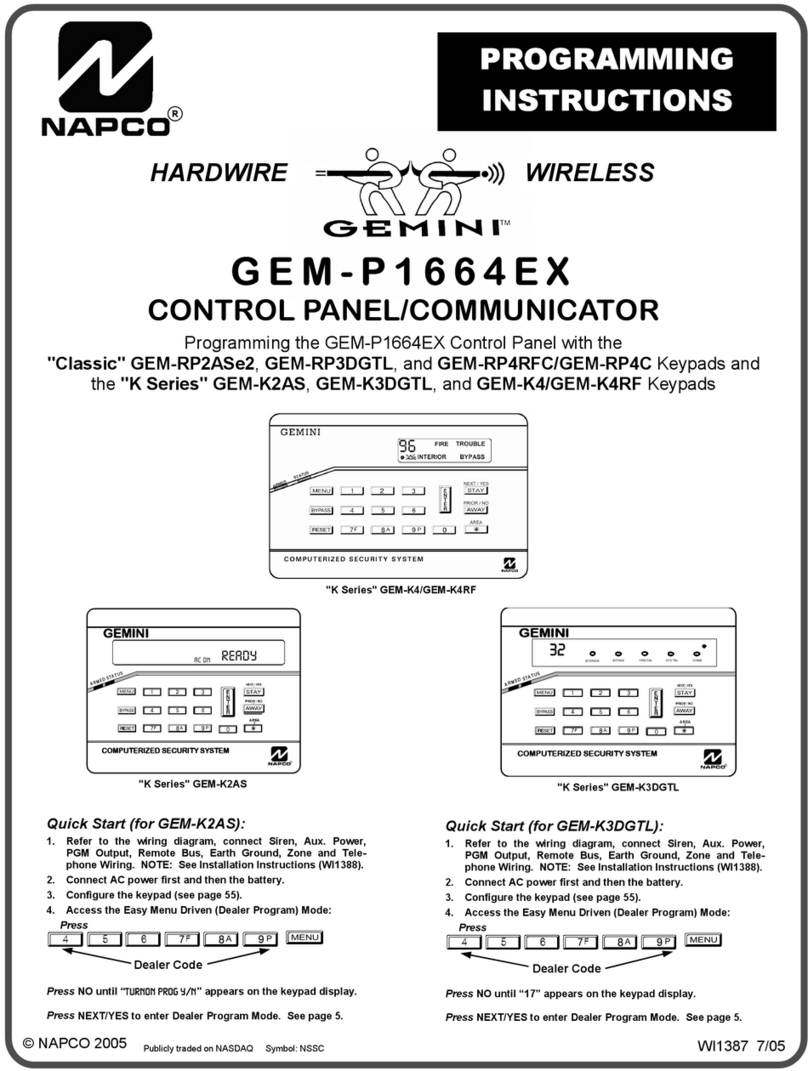
NAPCO
NAPCO Gemini GEM-P1664EX Programming instructions
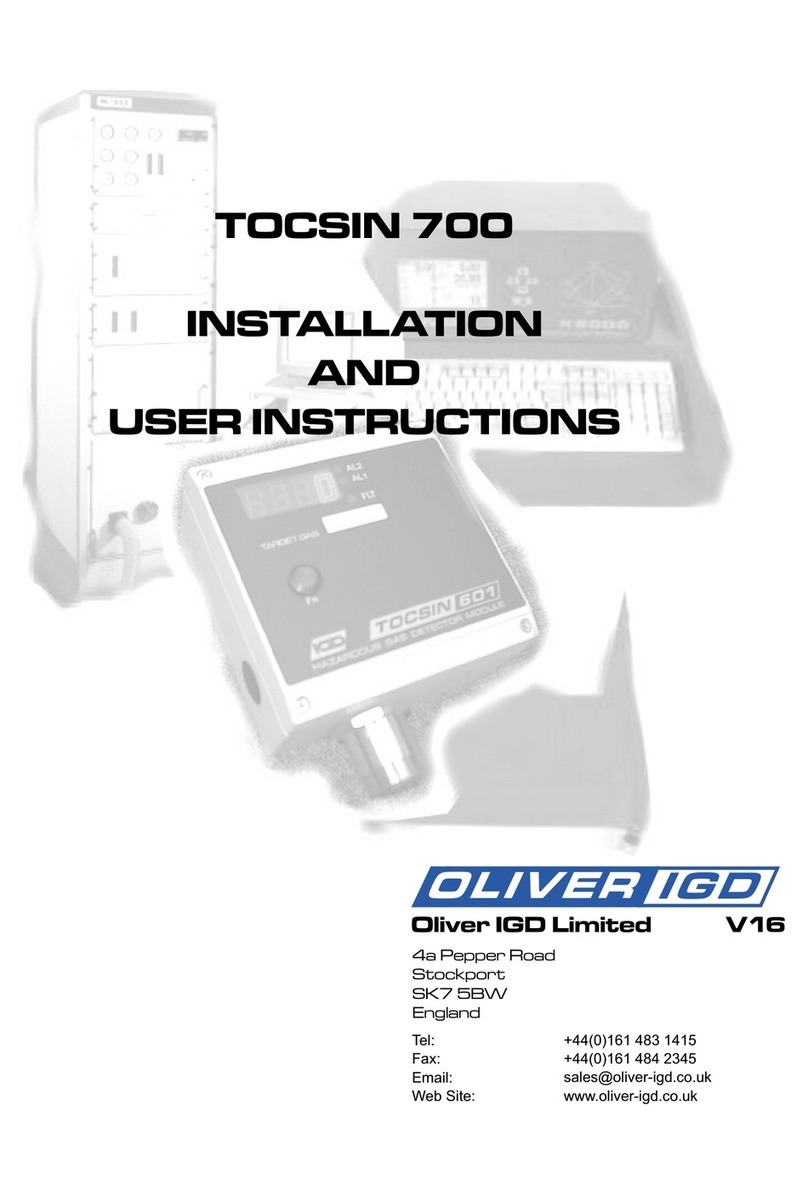
Oliver IGD
Oliver IGD TOCSIN 700 Installation and user instructions

Samsung
Samsung MWR-WW10N installation manual
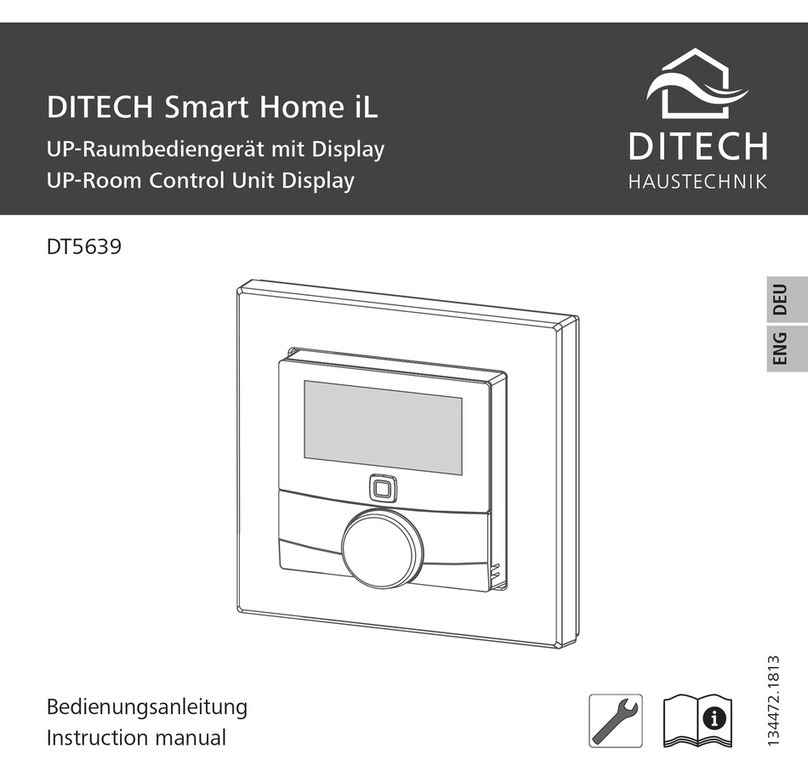
DITECH
DITECH DT5639 instruction manual
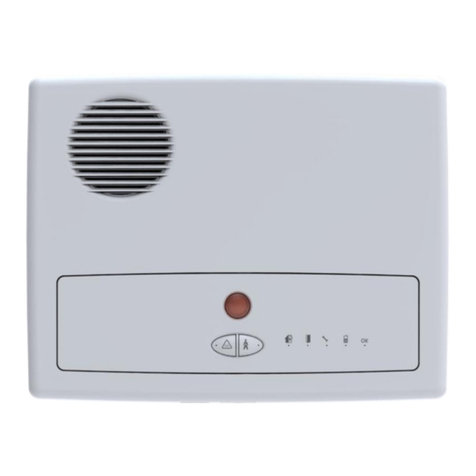
Essence Security
Essence Security EverGuard ES7000EG user guide
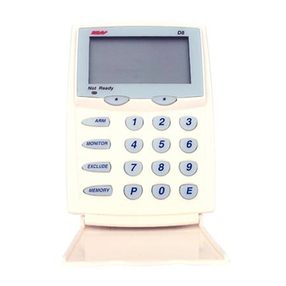
Ness
Ness D-8 Installation & programming manual
